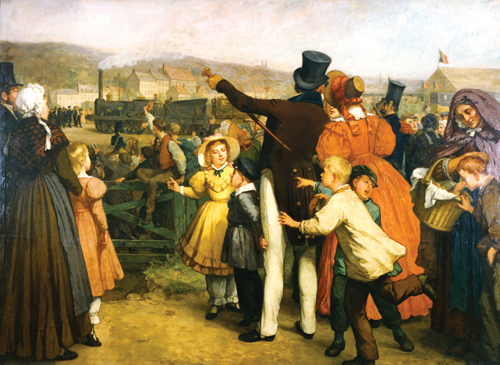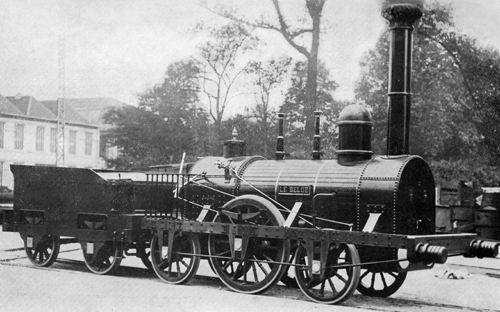

 STUART JORDAN looks at the pioneering history of Belgian Railways.
STUART JORDAN looks at the pioneering history of Belgian Railways.
The Belgians were pioneers in railway building on the continent, and their railway history is a succession of 'firsts'. They were the first country in mainland Europe to run passenger services (although not the whole of Europe, which was of course Great Britain), Belgium was the first state in Europe to have a national railway system, and also the first to have a nationalised system.
Before the country split from the Netherlands during the Belgian Revolution of 1830-31, there were several failed attempts to get permission to build railways, but these were all rejected. After independence there was an enormous attempt to survey possible routes for a Belgian railway network in order to regenerate the economy.

"Départ de la Flèche le 5 mai 1835", painted by Jan Antoon Neuhuys, showing the first Continental passenger service pulled by la Flèche.
The first route given the green light was from Mons to Antwerp via Brussels, completed in 1836. The initial length of track was from Brussels to Mechelen and was completed in 1835. The Belgian railway was heavily influenced by the British system, with George Stephenson called in to work with them. Stephenson rode the first Continental passenger service, and his company sold the Belgians three locomotives based on Rocket, named La Flèche ("Arrow"), L'Eléphant ("Elephant"), and Stephenson. The British influence still lives on, with Belgian trains running on the left-hand side rather than the right like their road traffic.
Further lines were built, including one from Liège to Ostend. Most lines were state-run, but there were some private lines on twenty year leases – after this time the lines would revert to the state. The expansion of the railway system helped the country out of the recession caused by the revolution, and kick-started the Belgian Industrial Revolution. After ten years Belgium had 560km (350m) of track, and eighty stations.

Another first - "Le Belge", the first Steam Locomotive to be built on the Continent.
In 1868 the Chemins de fer de l'Est (French Eastern Railways) attempted to make an offer and buy several lines in the south and east of Belgium. This met with stiff resistance from the Belgian Government, who thought the French would just use the lines to invade, and the sale was not allowed. This caused outrage and infuriated the French, and Napoleon III (not to be confused with his more famous uncle) contemplated invading anyway. However in 1870, as was European politics at the time and after mounting tensions between the two countries, France invaded Prussia instead, leading to the Franco-Prussian War against the coalition of German states.
By 1958 the whole network was state-owned, and the system now has links to the following other countries:
As the country is bilingual, the state railway company is known as either:

Several companies that we stock here at Gaugemaster produce items for Belgian Railways; Fleischmann, Marklin, Piko, Roco and Trix. in a variety of scales, including HO, N and Z Scale. The items can be found under either SNCB or NMBS depending on the manufacturer's description. Of course, Belgium's links to other countries allow you to run a multitude of European stock, from Thalys units, SNCF Freight, DB ICE Trains (available in Starter Sets, Locomotives and Coaches), and of course Eurostar.